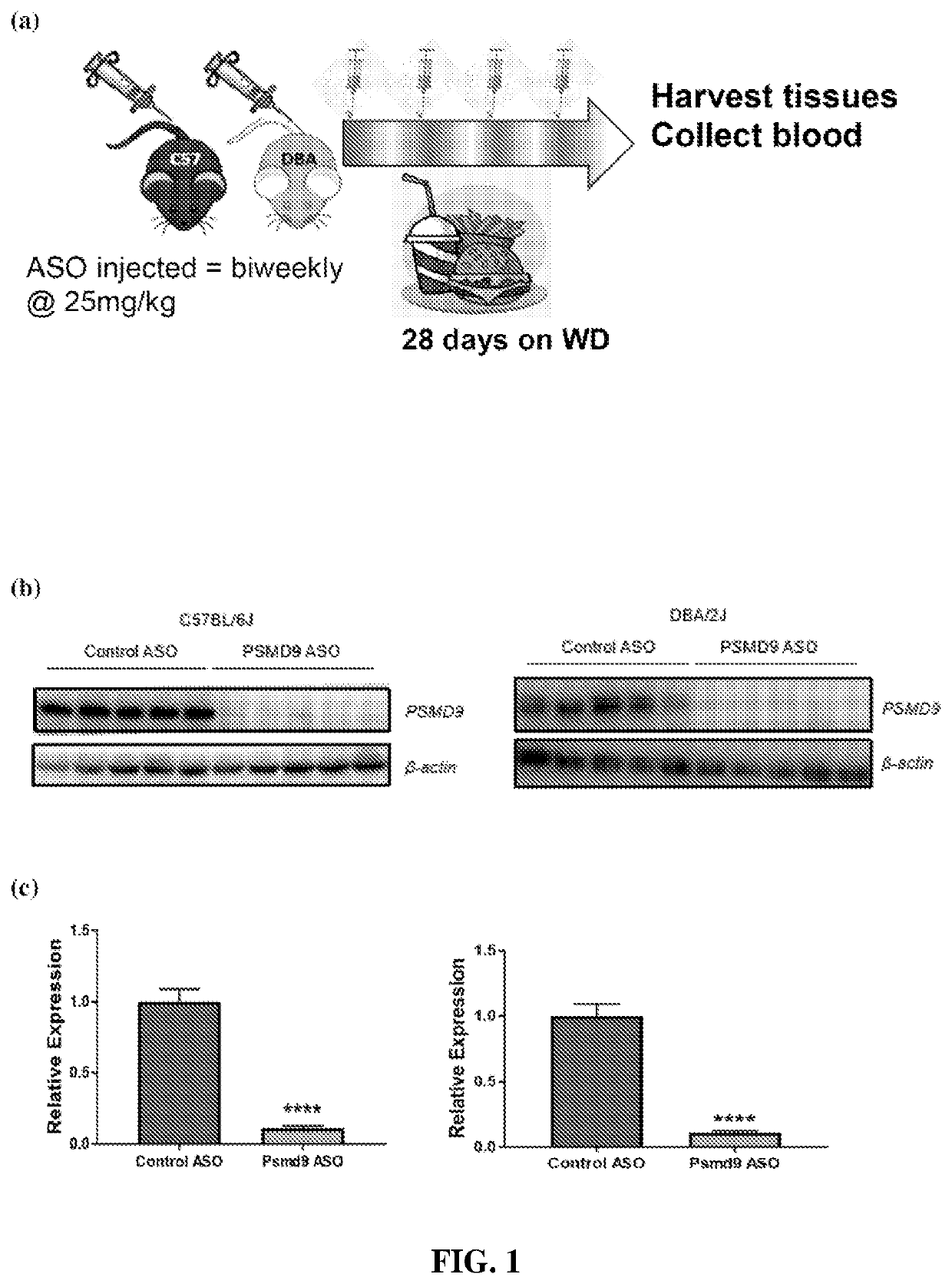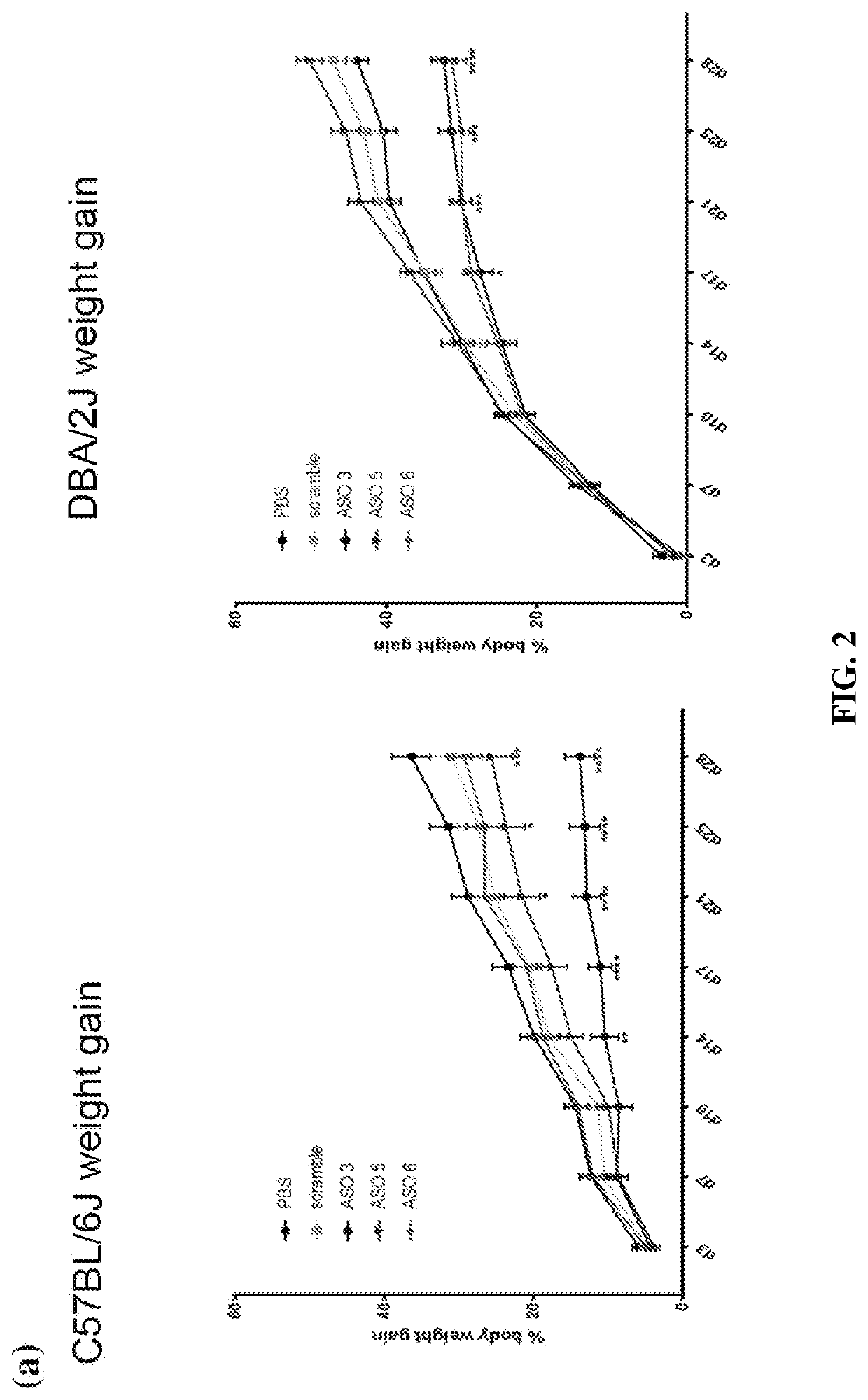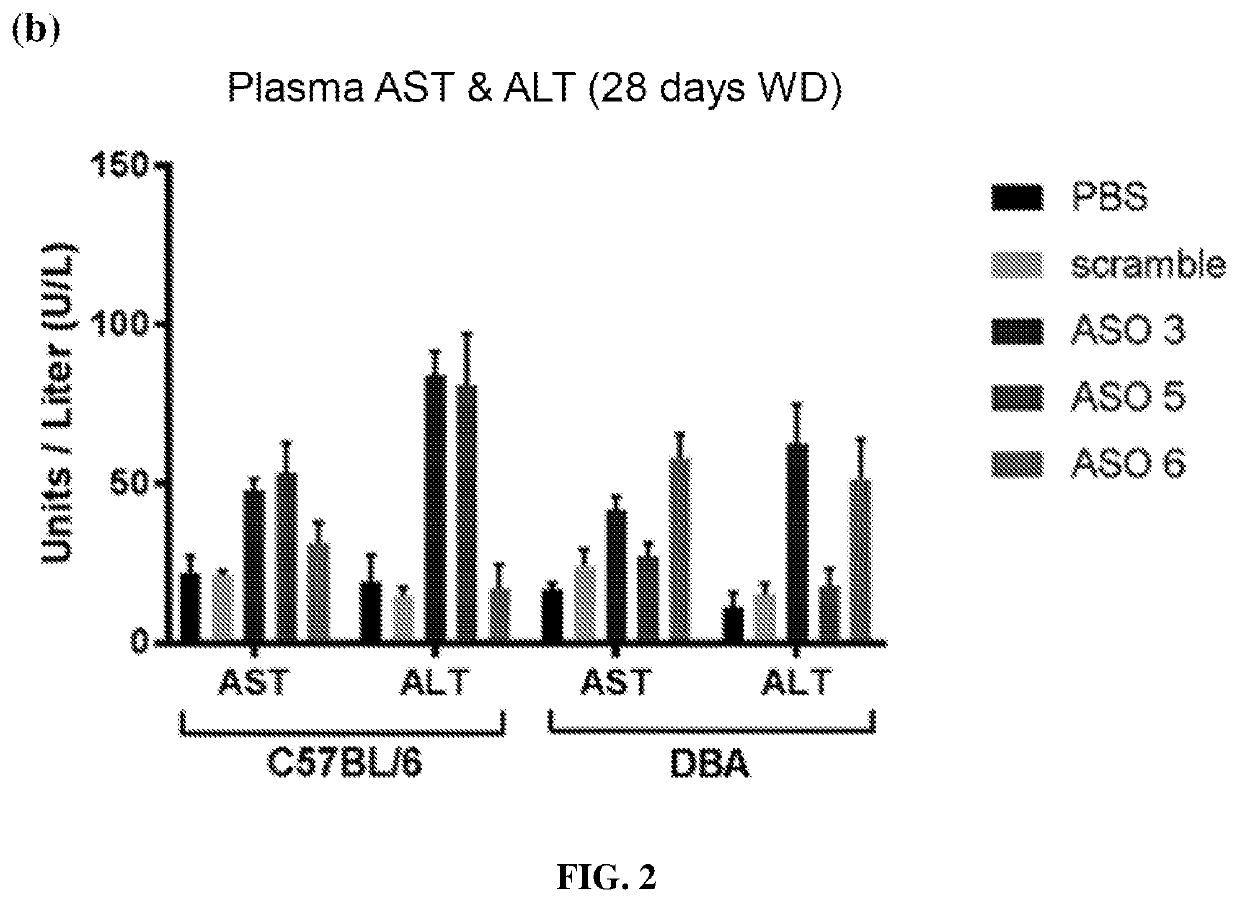Method of modulating adiposity
- Summary
- Abstract
- Description
- Claims
- Application Information
AI Technical Summary
Benefits of technology
Problems solved by technology
Method used
Image
Examples
example 1
[0346]ASO against PSMD9 caused robust silencing of PSMD9 at the protein level in white adipose tissue and activated AMPK consistent with increased energy expenditure
[0347]8-week old, male C57BL / 6J and DBA / 2J mice were treated twice weekly with control ASO or Psmd9 ASO at 25 mg / kg by intraperitoneal injection for 28 days. At the same time, mice were fed a Western diet (Research Diets, D12079B) (n=8 mice per group). Adipose tissue and plasma were obtained for later analysis including lipidomics, Western blotting and qPCR. During the 28-day study, body weight was measured bi-weekly. Plasma ALT and AST were analysed using a commercial kit according to the manufacturer's instructions (TECO Diagnostics). Adipose tissue samples were homogenized in RIPA lysis buffer containing freshly added protease (complete EDTA-free, Roche) and phosphatase (Sigma) inhibitors. Resolved proteins were transferred to PVDF membranes and subsequently probed with the following antibodies: PSMD9 (Sigma), Ser 563...
example 2
[0354]Further experiments to assess and confirm the effects of PSMD9 silencing in adipose tissue include comparing Native vs Gal-Nac targeted ASOs. This study will compare native ASOs that are untargeted to a cell type to ASOs with a “GalNAc” conjugate, which targets the ASO to the liver for uptake by the asialoglycoprotein receptor (ASGR). These studies will allow us to determine whether the effects observed with the ASO are a result of direct effects on the liver or whether the effects are also a result of targeting extra-hepatic tissues, such as adipose tissue. Mice (C57BL / 6J and in DBA / 2J) experiments will run for 6 months and mice will be concurrently fed the AMLN diet (40% total fat kCal: 18.5% trans-fat, 20% fructose, 2% cholesterol) considered to be a gold-standard diet-induced model of non-alcoholic steatohepatitis (NASH). The mice will also gain weight and develop complications including type 2 diabetes. Mice will undergo the protocol illustrated below, with assessment of ...
example 3
FURTHER STUDIES
[0356]At 8-10 weeks of age, male C57BL / 6J mice were fed an AMLN diet (43% kCal fat; 20% fructose, 2% cholesterol) for a duration of 6 months (See study design in FIG. 8). Mice were administered one of the anti-sense oligonucleotides (ASOs) as listed in the table in FIG. 8 or saline, weekly via intraperitoneal injection. Native ASO was administered at 25 mg / kg and liver targeted ASO was administered at 1 mg / kg once weekly. Both the Native (whole body) and GalNac (liver targeted) ASOs bind the same sequence of the PSMD9 mRNA (ASO 3). ASO were designed and synthesized by Ionis Pharmaceuticals. Chimeric 16-oligonucleotide phosphorothioate oligonucleotides targeted to mouse PSMD9 (5′-CTCTATGGGTGCCAGC-3′ SEQ ID NO:6) or control; N-acetylgalactosamine(GalNac) conjugation targets delivery to hepatocytes via the asialoglycoprotein receptor (ASGR). Over the duration of the study mice underwent extensive metabolic phenotyping. The data illustrated present data on body compositio...
PUM
| Property | Measurement | Unit |
|---|---|---|
| molecular mass | aaaaa | aaaaa |
| pH | aaaaa | aaaaa |
| pH | aaaaa | aaaaa |
Abstract
Description
Claims
Application Information
 Login to View More
Login to View More - R&D
- Intellectual Property
- Life Sciences
- Materials
- Tech Scout
- Unparalleled Data Quality
- Higher Quality Content
- 60% Fewer Hallucinations
Browse by: Latest US Patents, China's latest patents, Technical Efficacy Thesaurus, Application Domain, Technology Topic, Popular Technical Reports.
© 2025 PatSnap. All rights reserved.Legal|Privacy policy|Modern Slavery Act Transparency Statement|Sitemap|About US| Contact US: help@patsnap.com



